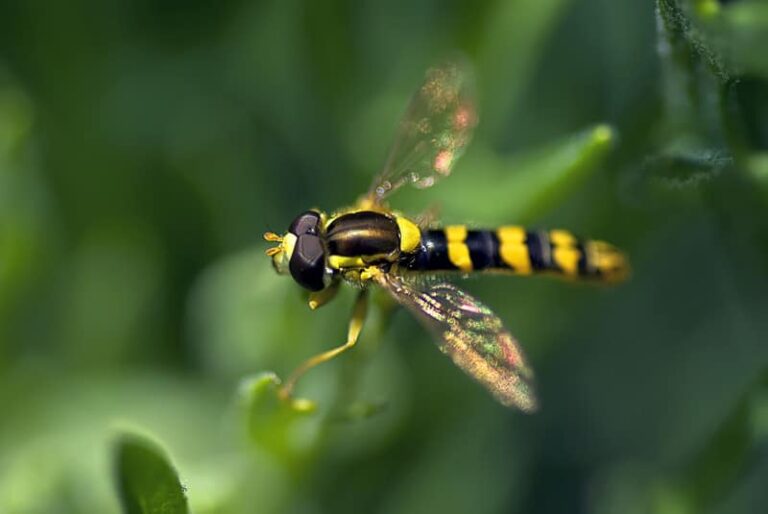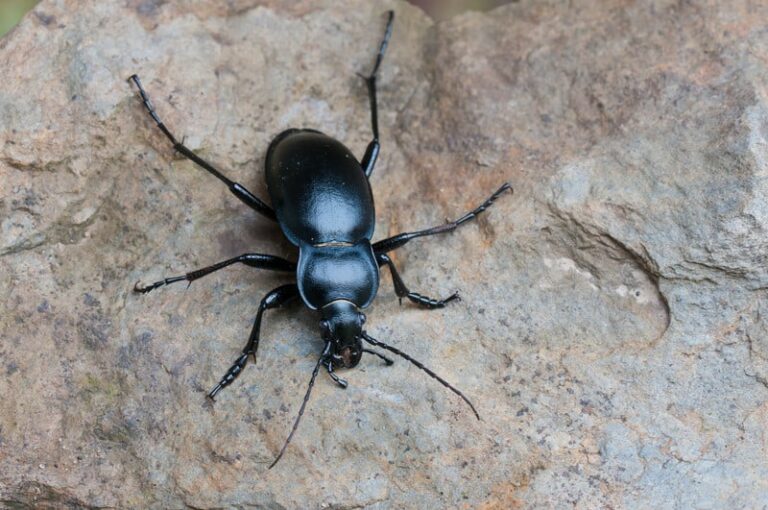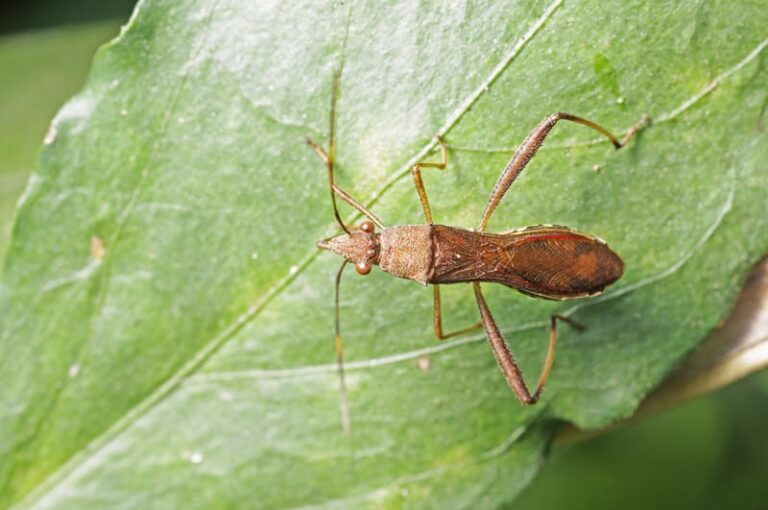Creating Habitat for Beneficial Insects and Pollinators
Beneficial insects are the quiet workers that keep a garden healthy and thriving. They pollinate flowers, help set fruit, and control pests naturally—reducing the need for chemical sprays or constant intervention. Creating a habitat for them ensures these helpful species have food, water, and shelter throughout the year. When you design your garden with beneficial insects in mind, you build a self-sustaining ecosystem where balance replaces struggle, and the garden largely takes care of itself.
In my Sonoma Valley garden, one of the most important lessons I’ve learned is that healthy plants start with healthy insect communities. Bees, ladybugs, lacewings, and other beneficial insects do the work of pollination, pest control, and soil health. By creating habitat specifically for them, you support a garden that grows stronger, more resilient, and more productive each season.
Why Beneficial Insects Matter
- Pollination: Bees, butterflies, and flies move pollen between flowers, boosting fruit and vegetable yields.
- Pest Control: Ladybugs, lacewings, and parasitic wasps reduce populations of aphids, caterpillars, and other pests.
- Soil Health: Certain insects help aerate soil and break down organic matter, improving fertility.
- Biodiversity: A diverse insect community encourages balanced ecosystems, reducing the risk of disease and overpopulation of pests.
How to Create Insect-Friendly Habitat
1. Plant a Diversity of Flowers
- Include native perennials and annuals with different bloom times for continuous forage.
- Mix tall and low-growing flowers to create layered habitat.
- Examples: Milkweed, bee balm, coneflower, goldenrod, wild marigolds.
2. Provide Shelter
- Leave small brush piles, logs, or rock piles for insects to nest.
- Use bee hotels or bundles of hollow stems for solitary bees.
3. Avoid Pesticides
- Even organic sprays can harm beneficial insects.
- Use targeted interventions only when necessary.
4. Provide Water Sources
- Shallow dishes with pebbles or small ponds give pollinators a safe place to drink.
- Keep water fresh and accessible.
5. Include Host Plants
- Certain insects need specific plants for reproduction (e.g., milkweed for monarch butterflies).
- Integrate these into your vegetable or flower beds.
Tips from My Garden
I plant clusters of pollinator-friendly flowers around my vegetable beds, leaving some areas with leaf litter and old branches as insect shelters. Ladybugs and lacewings arrive naturally in spring, and native bees find my bee hotels each season. Even a small patch of wildflowers at the edge of a raised bed can dramatically increase pollination and reduce pests.
Quick Tips for Harvest to Table Gardens
- Plant continuous bloom flowers throughout the season.
- Include host and shelter plants near crops.
- Avoid broad-spectrum pesticides.
- Offer shallow water and sun-dappled areas.
- Observe and learn which insects arrive naturally, then support them.
Conclusion
Creating habitat for beneficial insects and pollinators is one of the most effective steps you can take in a regenerative garden. By offering food, shelter, and safe spaces, you invite nature to partner with you, increasing productivity while supporting a thriving ecosystem. A garden rich in insects is a garden that truly sustains itself.
Beneficial Insects & Pollinators Habitat Cheat Sheet
Why Support Beneficial Insects
- Pollination: Bees, butterflies, and flies increase fruit and vegetable yields.
- Pest Control: Ladybugs, lacewings, and parasitic wasps reduce pest populations naturally.
- Soil Health: Soil-dwelling insects aerate soil and help decompose organic matter.
- Biodiversity: Balanced ecosystems reduce disease and pest outbreaks.
Top Beneficial Insects & Pollinators
| Insect | Role | Habitat/Host Plants |
| Native Bees | Pollinators | Bee hotels, hollow stems, sunlit flowers |
| Honey Bees | Pollinators | Flower clusters, water dishes, flowering herbs |
| Ladybugs | Aphid control | Leafy greens, flowers, small shelter piles |
| Lacewings | Aphid & pest control | Flowering plants, low shrubs, leaf litter |
| Parasitic Wasps | Pest suppression | Flowering nectar plants like dill, fennel, coriander |
| Butterflies | Pollination | Host plants (milkweed, parsley, dill) & nectar flowers |
| Ground Beetles | Soil pest control | Mulch, leaf litter, logs, shaded areas |
| Spiders | Pest control | Mulch, shrubs, rocks, low ground cover |
Creating Habitat Tips
- Plant Diverse Flowers: Mix native perennials, annuals, and different bloom times.
- Provide Shelter: Brush piles, logs, rocks, bee hotels, or hollow stems.
- Avoid Pesticides: Minimize chemical sprays to protect beneficial insects.
- Provide Water: Shallow dishes with pebbles or small ponds.
- Include Host Plants: Milkweed for monarchs, parsley/dill for parsley butterflies, etc.
- Observe & Adjust: Notice which insects visit and expand their preferred habitats.
Quick Reference for Planting
- Edges & Borders: Flower strips, wildflower patches
- Near Vegetable Beds: Companion flowers like marigolds, bee balm, coneflowers
- Sheltered Spots: Mulch, leaf litter, small brush piles
- Water Sources: Shallow dishes with pebbles or small ponds
Regenerative Gardening Learning Hub
🌿 Start here: The Complete Guide to Regenerative Gardening and Farming
1️⃣ Soil Health and Living Systems
- How to Build Living Soil: A Step-by-Step Guide
- Understanding the Soil Food Web: Life Beneath Our Feet
- How to Use Compost and Vermicompost in a Regenerative Garden
- Mulching for Soil Health: How to Protect and Feed the Soil Naturally
- Using Mycorrhizal Fungi to Boost Plant Health and Yield
- Minimal Tillage: Why and How to Disturb the Soil Less
- How to Test, Read, and Rebalance Your Soil Naturally
2️⃣ Biodiversity and Polyculture
- How to Design Polycultures and Companion Plantings for Regenerative Gardens
- Integrating Native Plants into Your Food Garden
- Creating Habitat for Beneficial Insects and Pollinators
- Cover Cropping for Biodiversity and Soil Regeneration
- Crop Rotation for Soil Fertility and Pest Management
3️⃣ Carbon Sequestration and Organic Matter
- Why Capturing Carbon in the Garden Is Important and Fights Climate Change
- Increasing Soil Carbon with Compost, Mulch, and Deep Roots
- Biochar: What It Is and How to Use It in the Garden
- How to Keep Soil Covered Year-Round to Build Carbon and Fertility
4️⃣ Water Stewardship
- How to Use Water Wisely: The Principles of Water-Wise Regenerative Gardening
- Building Swales and Contour Beds to Slow and Sink Rainwater
- Mulch, Groundcovers, and Soil Structure for Water Retention
- Harvesting Rainwater for Regenerative Gardens
5️⃣ Perennial Crops and Permanent Systems
- How to Transition from Annuals to Perennials in the Vegetable Garden
- Perennial Vegetables for Regenerative Systems
- Agroforestry and Food Forest Basics for Gardeners
- Integrating Fruit Trees and Shrubs into the Vegetable Garden
6️⃣ Animal Integration
- Chickens in the Garden: How to Use Them Regeneratively
- Using Worms and Bees as Regenerative Allies
- The Role of Animals in Closing the Nutrient Loop
7️⃣ Human and Community Connection
- The Ethics of Regenerative Gardening: Care for Earth, People, and Future Generations
- How to Build a Community Garden Using Regenerative Principles
- Teaching Regenerative Gardening to Children and Beginners
- Healing the Land and Ourselves: The Psychology of Regenerative Practice
8️⃣ Regenerative Design and Planning
- How to Plan a Regenerative Garden from the Ground Up
- Regenerative Gardening Principles Simplified for the Home Gardener
- Home Garden Permaculture
- How to Create a Home Food Forest
- French Intensive Gardening
- Square Foot Gardening
- Zone and Sector Planning for Small Regenerative Gardens
- Using Observation and Feedback to Improve Your System Each Season
9️⃣ Inputs and Outputs: Closing the Loop
- How to Make and Use Compost Tea and Fermented Plant Extracts
- Zero Waste Gardening: How to Cycle Nutrients and Minimize Inputs
- How to Build a Closed-Loop Garden System
10️⃣ Case Studies and Personal Experience



